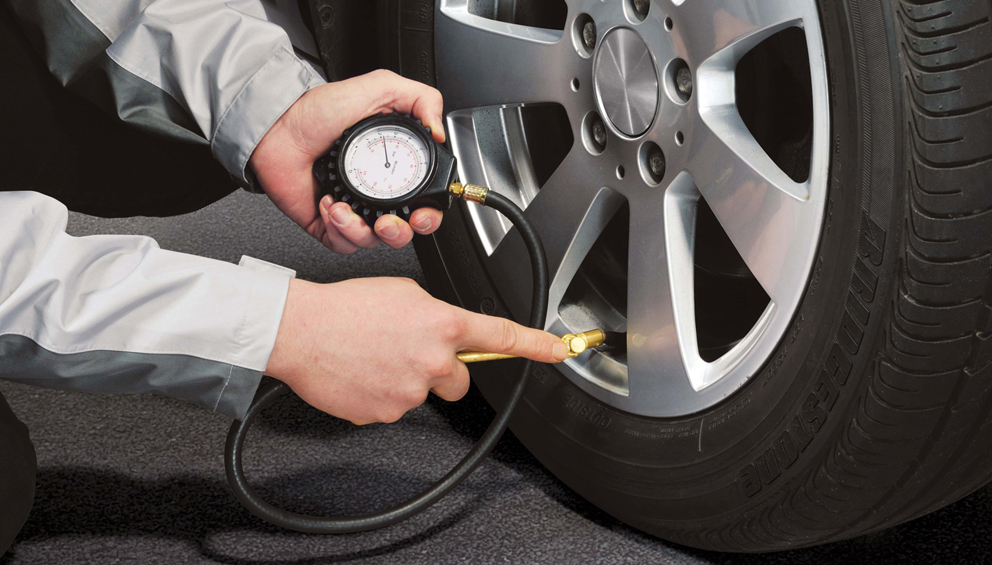Your car's tyres are the only thing that come into contact with the road. As such, it's important that we take care of them so that they can take care of us.
However, for many motorists, checking tyre pressure is not much of a consideration between services and MOTs, even though it's extremely easy to do.
You should be regularly checking your car's tyre pressure (at least once a month) to ensure that they don't wear prematurely, to reduce fuel costs and make sure your car handles corners and braking effectively while driving.
HOW TO CHECK YOUR CAR'S TYRE PRESSURE
STEP 1
You need to find the tyre pressure rating for your car. Normally, you can find them here:
- Your car's manual
- Inside the petrol cap
- Printed on the inside ledge of the driver's door
If you still can't find the correct tyre pressure rating, enter your registration plate into the National Tyre Service website.
Every make and model will have a different pressure rating, so it is vital that you make sure you use the pressure rating for your specific car.
STEP 2
You will need a pressure gauge at this point. Take the dust cap on the valve of your tyre off, and attach the pressure gauge.
STEP 3
Record the reading and cross-reference it against the correct pressure rating for your car.
STEP 4
If the tyre is underinflated, use an air pump to inflate the tyre to the correct pressure at home. If you don't have an air pump, you can visit a petrol station - most of them have facilities you can use to put air in your car tyres.
If the tyre is overinflated, allow some air to escape while the dust cap is off, then re-check the pressure to see if it is now at the correct pressure.
STEP 5
Repeat steps 2 - 4 for the rest of your tyres, including the spare (if you have one).

WHAT HAPPENS IF MY TYRES DON'T HAVE THE CORRECT PRESSURE?
Incorrect tyre pressure can make your car less safe to drive, cause damage to the car itself and cost you money unnecessarily.
If your new tyres are overinflated you might experience less traction with the road, which can affect the car's handling and braking and cause accidents. Your tyres will also have a shorter lifespan due to them being heavier and uneven.
Under inflated tyres can also cause problems such as increased wear and tear because they're not rolling smoothly on the road. In addition, increased rolling distance also causes your car use more fuel, which in turn will cost you more money.

Having correctly inflated tyres ensures that you get the most out of them by giving them a longer lifespan and reducing the rate of wear and tear.
Your car also complies with all of the relevant road laws by having properly inflated tyres, which increases your safety and the safety of other road users.
Vehicle servicing
Regularly servicing your vehicle is a proven way to extend its lifespan.
Book OnlineTyres
We prioritise the supply and fitting of tyres due to their critical role in ensuring vehicle safety.
Book OnlineVehicle Maintenance and Repairs
We offer a wide range of repair and maintenance services using the latest equipment.
Book Online